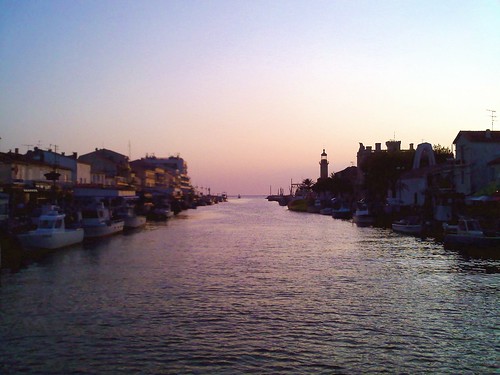Finally the waterway, cuts through le Grau de Roi, so named in honor of Saint Louis’ first passage, and spills into the Mediterranean. Today, the city is a major tourist destination. The canal through town is lined with restaurants, offering the day’s freshest catch. Further inland, the city streets provide a menagerie of traditional tourist trinkets and apparel. The rows of Slushie machines reminded me of Bourbon street.
An expansive sandy beach stretches for miles along the coast. However, except for the ocean channels dug to allow the fishing fleet to exit to the sea, the water level is low. At low tide, it’s possible to walk all the way out to the breakwaters, several hundred meters out from the boardwalk. Developers have seized on the opportunity to build along the beach and erected all sorts of odd pyramid and wave-form shaped time-share buildings.
 Fortunately, we visited on an off-season weekend. This allowed us to stay in an excellent high-end hotel (3 Logis lamps!). But, most importantly, it meant that the traffic and crowds were manageable. Given the vast numbers of condos, I could not imagine visiting in season.
Fortunately, we visited on an off-season weekend. This allowed us to stay in an excellent high-end hotel (3 Logis lamps!). But, most importantly, it meant that the traffic and crowds were manageable. Given the vast numbers of condos, I could not imagine visiting in season.

![Reblog this post [with Zemanta]](http://img.zemanta.com/reblog_e.png?x-id=2afdd1ec-6ef3-4a7c-8482-02b26bb912bf)

No comments:
Post a Comment